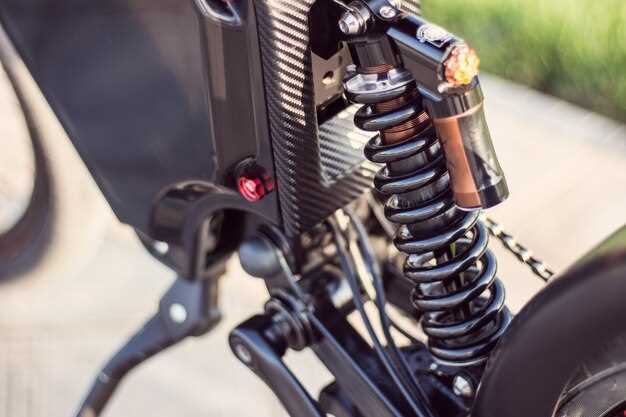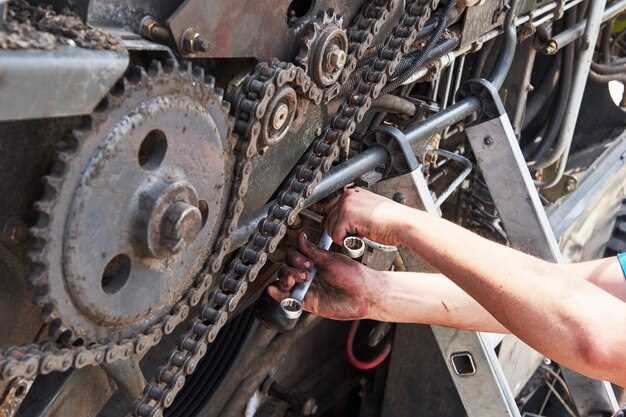
Upgrading your vehicle’s suspension is one of the most effective ways to enhance its handling performance. Regardless of whether you’re a casual driver or a motorsport enthusiast, the right suspension modifications can provide significant improvements in grip, stability, and cornering capabilities. With a wide array of options available on the market, it can often be challenging to determine which modifications will yield the best results for your specific needs.
In this article, we will explore some of the top suspension mods that can transform your driving experience. From coilovers to sway bars, each modification serves a unique purpose and offers distinct advantages. Understanding these components will empower you to make informed decisions and invest wisely in your vehicle’s suspension system.
Not only do these modifications enhance the handling characteristics of your vehicle, but they can also contribute to better overall ride quality. By diving into the world of suspension upgrades, you can unlock your vehicle’s full potential, ensuring improved performance on both the track and the street. Let’s delve into the key suspension modifications that can elevate your driving prowess.
Upgrading to Coilovers for Improved Customization
Coilovers have become a popular choice among automotive enthusiasts looking to enhance their vehicle’s handling performance. Unlike traditional shock absorbers and springs, coilovers integrate both components into a single unit, allowing for a more compact and easily adjustable suspension setup.
One of the primary advantages of coilovers is their adjustability. Most coilover systems offer adjustable ride height, enabling drivers to lower or raise their vehicles according to their preferences or driving conditions. This feature not only improves aesthetics but also enhances the center of gravity, directly affecting handling dynamics.
In addition to ride height adjustments, many coilover kits also provide damping adjustments. This feature allows users to fine-tune the stiffness of the suspension to match their driving style or specific conditions, such as track days or daily commuting. By adjusting both ride height and damping, coilovers enable a level of customization that is often unattainable with standard suspension setups.
The choice of coilovers also allows for various spring rates to be installed, further tailoring the suspension to meet individual needs. Softer spring rates can enhance ride comfort while stiffer rates improve responsiveness and handling. This flexibility is crucial for drivers who seek a balance between daily usability and performance on the track.
Installation of coilovers typically requires more than just bolting them on; it may involve alignment adjustments to ensure optimal performance. However, the benefits gained from improved handling and customization make it a worthwhile investment for enthusiasts aiming to elevate their driving experience.
Ultimately, upgrading to coilovers offers a versatile solution for maximizing both ride quality and handling precision, making it an essential mod for anyone serious about performance tuning.
Choosing the Right Anti-Roll Bars for Stability

Anti-roll bars, also known as stabilizer bars or sway bars, are essential components in enhancing vehicle handling and stability during dynamic driving conditions. Selecting the appropriate anti-roll bar requires careful consideration of various factors that directly impact performance.
Understanding Bar Thickness: The thickness of the anti-roll bar significantly affects its rigidity and, consequently, the vehicle’s handling characteristics. Thicker bars provide increased stiffness, which reduces body roll during cornering. However, this can lead to a harsher ride and reduced comfort. Conversely, thinner bars offer a softer ride but may allow excessive body roll. The ideal thickness depends on your driving style and the type of terrain you frequently encounter.
Material Choices: Anti-roll bars are typically made from materials such as steel or aluminum. Steel bars are heavier and offer greater durability, while aluminum bars provide a weight advantage, which can improve overall vehicle responsiveness. Consider your performance goals and whether weight savings are a priority for your setup.
Adjustability: Some aftermarket anti-roll bars feature adjustable settings, allowing for customization of stiffness. This flexibility can be beneficial for drivers who frequently switch between different driving conditions or events, such as track days or daily commuting. An adjustable bar can help strike a balance between comfort and performance.
Compatibility with Suspension Setup: Ensure that the chosen anti-roll bar is compatible with your vehicle’s existing suspension components. Different setups, such as coilovers, stock springs, or air suspension, can interact differently with the anti-roll bar. Matching components is crucial for achieving the desired handling characteristics.
Installation Considerations: Proper installation is essential for the anti-roll bar to function effectively. Misalignment or improper mounting can lead to suboptimal performance and potential damage. It’s advisable to seek professional installation if you’re inexperienced with suspension modifications.
In summary, selecting the right anti-roll bar requires a careful analysis of thickness, material, adjustability, compatibility, and installation. By aligning these factors with your specific performance needs, you can significantly enhance your vehicle’s stability and handling, providing a safer and more enjoyable driving experience.
Investing in Performance Bushings for Enhanced Response

When it comes to improving overall handling performance, one often overlooked component is the bushings. Performance bushings, made from high-quality materials such as polyurethane or solid metal, can significantly enhance the responsiveness of your vehicle. Unlike factory rubber bushings, which can degrade over time and reduce steering precision, performance versions provide a firmer connection between various suspension components.
Enhanced feedback is one of the primary benefits of upgrading to performance bushings. These bushings reduce the amount of flex and movement that occurs during cornering and acceleration, allowing drivers to feel more connected to the road. This improved feedback can lead to quicker reaction times when navigating corners or making directional changes, ultimately resulting in a more enjoyable driving experience.
Durability is another key advantage. Standard rubber bushings can wear out quickly, especially under the stress of spirited driving or track use. Performance bushings, on the other hand, are engineered to withstand higher stress levels and extreme conditions, providing a longer lifespan. Investing in these components can reduce the frequency of replacements and ultimately save money in the long run.
Installation is relatively straightforward, especially for those with mechanical experience. Upgrading to performance bushings usually involves removing the old bushings and replacing them with the new ones. Many aftermarket options are designed to fit seamlessly into existing suspension setups, making the transition smooth without requiring additional modifications.
In conclusion, investing in performance bushings is a wise choice for enthusiasts looking to enhance their vehicle’s handling capabilities. The combination of improved responsiveness, feedback, and durability makes them a worthy addition to any suspension upgrade. By prioritizing these components, drivers can achieve a more engaging and precise driving experience on both the street and track.











